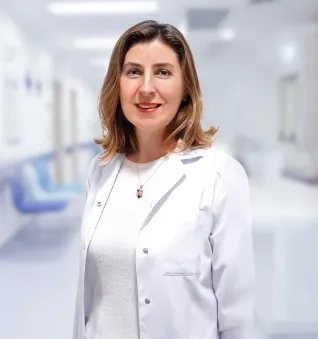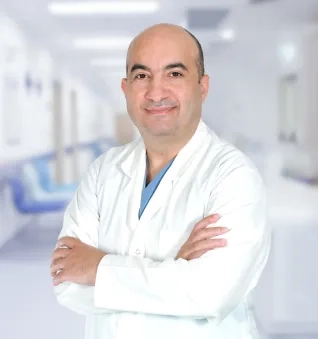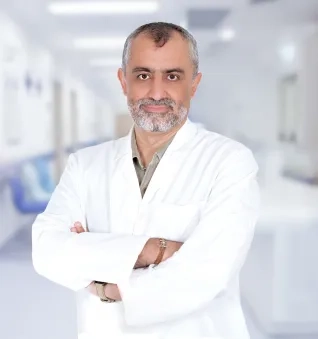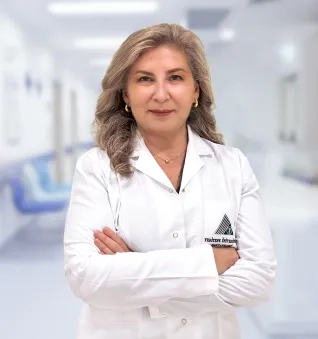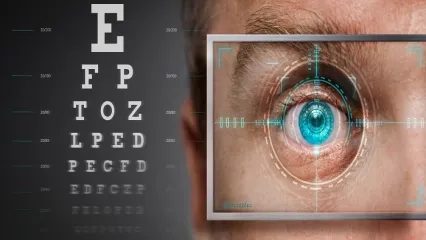Alo Yeditepe
Alo Yeditepe
What is Cataract? Symptoms and Treatment
What is Cataract?
A cataract is an eye disease that causes visual impairment when the natural lens in the eye loses its transparency. The lens in the eye focuses light onto the retina, but with age the transparency of this lens decreases, resulting in blurred, foggy vision.
Normally, the lens in the eye works transparently to focus light onto the retina. But when cataracts develop, the lens becomes cloudy and prevents light from focusing properly on the retina. This can lead to a decrease in the quality of vision and, if left untreated, blindness over time.
Although cataracts are usually a problem that occurs as a result of aging, they can also occur due to congenital diseases, trauma or diabetes.
Cataracts are one of the leading causes of preventable blindness in the world today. And cataracts are still a very serious cause of vision loss in developing and underdeveloped countries. However, in developed countries where cataract surgery is used intensively, it is no longer a cause of blindness.
What are the Causes of Cataract?
The most common cause of cataract is aging. However, cataracts can also develop for different reasons.
Age
70% of people over 80 years of age have cataracts.
Congenital Cataract (Congenital)
Congenital cataracts can be caused by genetic factors or infections in the womb (e.g. rubella). Genetic diseases such as galactosemia and Down syndrome are also associated with cataracts.
Traumatic Cataract
Impacts or trauma to the eye can cause cataracts.
Radiation and Rays
Prolonged exposure to UV light in the eye can increase the risk of cataracts.
Medicines and Cortisone
Long-term use of cortisone can also cause cataracts.
Genetic Factors
The risk increases in individuals with a family history of cataract.
What are the Symptoms of Cataract?
The main symptoms of cataracts include blurred vision and foggy vision. Also, changes in the number of the eye, especially in older people, can be a symptom of cataracts, as can clearer near vision. Patients may also complain of deterioration in their distance vision and frequent changes in the number of their glasses.
How is cataract treated?
Cataract treatment is based on the level of vision loss. When vision loss is below 50%, cataract surgery is usually recommended. The most common method for cataract surgery is a technique called phacoemulsification. In this surgical procedure, the condensed lens is broken into pieces with an ultrasonic device and removed from the eye. An artificial lens (intraocular lens) is then implanted, replacing the natural lens in the eye.
How is cataract surgery performed?
Cataract surgery is one of the most widely used and successful procedures in the world. It is usually performed under local anesthesia and as a day treatment.
A lens suitable for the patient is determined with the eye measurements made after the eye examination performed before the surgery. The most commonly used method in cataract surgery is the Phacoemulsification Method. This method is commonly known as “Phaco”. During the procedure, a small incision is made in the eye. The natural lens, which becomes cloudy with ultrasonic vibrations, is broken down and absorbed. An artificial intraocular lens (intraocular lens) is then inserted.
The choice of artificial intraocular lens is determined according to the patient's needs and general condition. Monofocal lenses have been used for many years and the main purpose was to provide good vision for distance. These people use glasses for near vision. Astigmatism can also be corrected with Toric lenses, which have been used more in recent years. When monofocal toric lenses are used, it is possible to significantly correct the natural astigmatism caused by the cornea. In Multifocal Lenses, that is, multifocal lenses, it is possible to promise a glasses-free life by correcting both distance and near vision. However, the important point at this point is the right patient selection
Is Cataract Prevention Possible?
Although cataracts usually develop due to aging, it is possible to reduce the risk with some lifestyle changes. In particular, prolonged exposure to the sun should be avoided and protective sunglasses should be used against UV rays. Avoiding risk factors such as smoking and excessive cortisone use can also help prevent cataracts from developing.
Frequently Asked Questions About Cataract
Can Cataracts be Prevented?
Although cataracts usually develop due to aging, it is possible to reduce the risk with some lifestyle changes. In particular, prolonged exposure to the sun should be avoided and protective sunglasses should be used against UV rays. In addition, avoiding risk factors such as smoking and excessive cortisone use can help prevent cataracts from developing.
What are the Risk Factors for Cataract Development?
Although cataracts can occur for different reasons, the main risk factor is age. However, cataracts may develop more rapidly due to the following risk factors.
- Diabetes / Obesity
- High blood pressure
- Eye pressure (glaucoma)
- Intense exposure to sunlight
- Cigarette consumption
- History of eye injury or intraocular surgery
- Long-term use of some drug groups such as steroid
- Family history of cataract
Are There Risks of Cataract Surgery?
Cataract surgery is one of the most widely used and successful procedures in the world. Treatment success is also quite high. However, it is also very important to perform the procedure with experience in terms of results. After surgery, the risk of infection and bleeding may develop due to insufficient and poor wound care. At this point, it is important for the patient to comply with the points pointed out by the physician and to pay attention to control-follow-ups.
When Should Cataract Surgery Be Performed?
The timing of the surgery may vary according to the patient's expectations and the evaluation with the physician. Cataract is not a problem that progresses very fast in routine. Although cataracts can develop rapidly in people with diabetes due to fluctuations in blood sugar, cataracts generally progress slowly. Therefore, it does not cause serious complaints in terms of vision in the initial stage. Therefore, the indication for cataract treatment, i.e. when to operate, is related to vision and the person's expectations. For example, a pilot's expectation of vision is not the same as a farmer's expectation of vision in his daily routine. Therefore, the person's expectation is important. However, on average, cataract surgery is recommended if the visual acuity is 50 percent or less.
This content was prepared by Yeditepe University Hospitals Medical Editorial Board.
”
See Also
- Damages of Fake Sunglasses
- Do not Risk Going Blind While Trying to Have Colored Eyes
- Get Your Child's Eye Examination Done Before They Go to School!
- Watch Out Blue Light Emitted By Devices For The Health of Your Eyes
- Pollen is Now Seen Outside of Seasonal Changes
- A Common But Little-Known Disease: Retinopathy of Prematurity (ROP)
- Pay Attention to the Flashing Light in the Eye!
- Medication Administration to the Eye
- Thyroid-Related Eye Diseases
- Glaucoma
- If You Have Diabetes, Consult An Ophthalmologist At Least Once A Year.
- It was Told that She could Lose Both Eyes, but She Recovered with an Operation
- Untreated Strabismus Can Cause Vision Problems!
- The Danger to the World: MYOPIA
- Eyelid Diseases
- Is Strabismus Genetic?
- One in 20 Newborns Have Tear Duct Obstruction
- Are Flies Flying Before Your Eyes?
- 7 Tips to Protect Your Eye Health
- Allergic Conjunctivitis (Eye Allergy)
- Eye Problems Increase as Children's Digital Screen Time Extends
Alo Yeditepe


